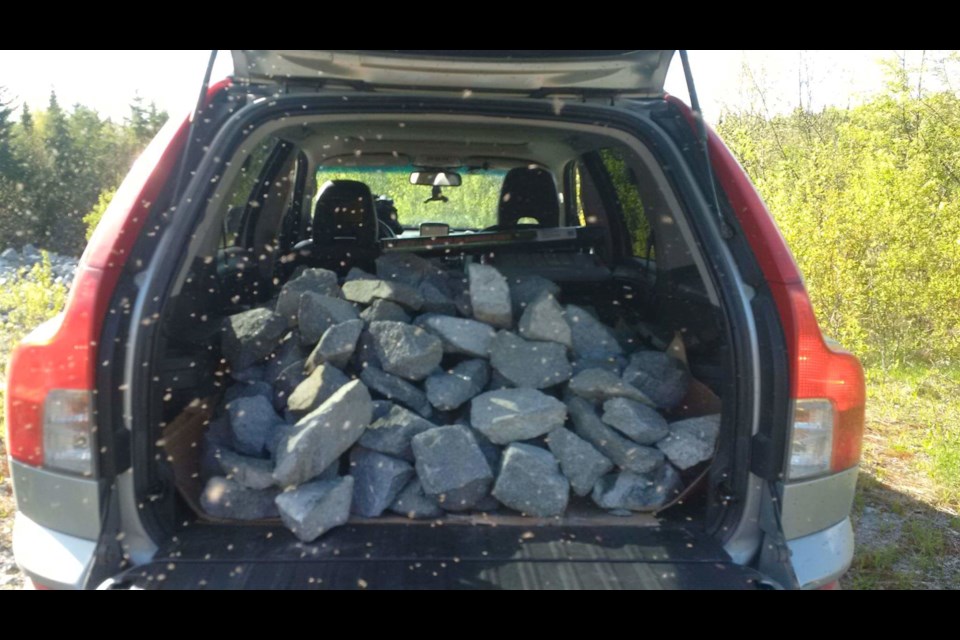Recently there has been renewed interest in going back to the moon. We know the moon is not made of Swiss cheese and some rocks in Northern Ontario are going to help pave the way.
Fifty-one years ago Neil Armstrong proved that. It was July 21, 1969 during the Apollo 11 mission. Some of you will remember where you were on that day, while others were not yet “thoughts” or Earthlings. To refresh our memories, Armstrong became the first to step onto the lunar surface. He spent about two and a half hours outside the spacecraft, his partner Buzz Aldrin slightly less; and together they collected pounds 21.5 kg (47.5 lb.) of lunar material for return to Earth.
During subsequent Apollo surface excursions, 2,415 samples weighing 382 kg (842 lb.) were collected, the majority by Apollo 15, 16, and 17 missions. Apollo 16 rocks are now important to the next steps in mining the moon.
What’s Next?
Scientists have studied the moon for centuries, with a lot of conflicting theories. Only actual substrate samples (without the Swiss cheese) could provide precise and accurate answers about compositions, ages, and processes.
There is an imminent need to understand the lunar surface environment particularly for mining. It is necessary to determine optimal methods for operations in the lunar “regolith” at selected landing sites. Regolith is the unconsolidated abrasive material blanketing the lunar surface. A lunar regolith simulant is a terrestrial material synthesized in order to approximate the chemical, mechanical, or engineering properties. Lunar regolith simulants are used by researchers who wish to research the materials handling, excavation and transportation. When you Google “lunar simulant” a Foleyet (between Chapleau and Timmins) deposit is referenced. These are the “back roads” rocks that will help with future trips to the moon.
Melissa Battler was contacted. She is the Chief Science Officer, of Mission Control Space Services. She guides technology development to meet the needs of scientists, and conducts mission operations research. As a planetary geologist, she has led more than ten human and robotic mission simulations with the North American Space Agency (NASA), Western University, and others in Moon and Mars analogue environments around the world. Melissa is an adjunct faculty member at both Western University and the International Space University.
Ms. Battler utilized these rocks in simulating what will happen next. The goal of her applied research was to develop a “recipe” for creating a physical/mechanical lunar regolith.
"A majority of the lunar surface is made up of rocks similar to the Shawmere Anorthosite, found near Foleyet. Anorthosite constitutes a major component of the lunar crust and comprises an important, if not dominant, ingredient of the lunar regolith," said Battler.
"This type of rock is much less common on the surface of the Earth. Therefore, in order to prepare for future lunar missions, it can be helpful to test drilling, construction and excavation equipment using a lunar soil simulant composed mainly of the Shawmere anorthosite, as it will have mechanical properties similar to those that we will experience while operating on the surface of the Moon.“
She said there are very few sources in the world and the Foleyet deposit is “definitely a world-class lunar analogue site for chemical/mineralogical accuracy.”
The crushed, anorthosite particle size is comparable to the Apollo 16 regolith sample #64 500 found in the Descartes Highlands.
She said Deltion Ltd. in Sudbury is continuing work with the lunar regolith simulant, and the Mining in Space tab, they been developing capabilities related to the prospecting for, and extraction of, resources from the moon, Mars and asteroids.
“Many other groups including universities across Canada, the Canadian Space Agency and NASA, other Canadian space companies are also using my simulant to prepare for lunar surface missions. Anorthosite is a calcium rich feldspar, it was first discovered by the then Ontario Department of Mines in 1972 and mapped in 1977.
The Apollo lunar flights may have ended in 1972, but the moon has remains of great interest to NASA and scientists around the world. NASA has requested an increase in the 2020 budget of $1.6 billion, in order to make another crewed mission to the Moon by 2024, followed by a sustained presence on the Moon by 2028.
Moon Rock Access
Anorthosite is an attractive rock, horticulturalists would like it for their gardens. Foleyet is south west of Timmins on Highway 101 which connects to Chapleau. The destination is UTM WGS 84 Zone 17 U 366677 5332403 or N48° 07’ 51.3’ W82° 47’ 30.7”. Access is by way of Warren Carty (WC) road, 21 km south west of Foleyet, travel west from the junction with Hwy 101 on the forest access road. It is 12 km on the WC road to a branch trail to the south; walk in about 300 metres to the small quarry.
You can take a few seconds with Back Roads Bill, in this video about the moon rocks.
